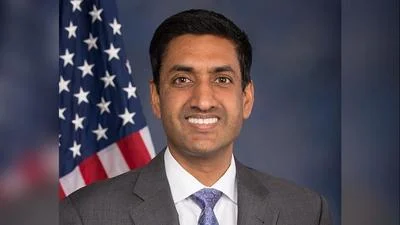John Taylor, Professor of Economics at Stanford University and developer of the "Taylor Rule" for setting interest rates | Stanford University
John Taylor, Professor of Economics at Stanford University and developer of the "Taylor Rule" for setting interest rates | Stanford University
Throughout the spring quarter, undergraduate Karen Rojas, ’25, collaborated with classmates to curate the exhibit "De la Tierra: Indigenous Ceramics from West Mexico Transcending Time and Space," featuring objects from the Stanford University Archaeology Collections (SUAC). Her parents are from Ixtlán del Río in Nayarit, where many of the objects originate.
"I felt this profound connection to preserving their dignity," Rojas said. "We can’t consider them as merely research subjects. They’re an extension of other humans who have lived in this world, and we must give them the care that they deserve." Rojas aims for visitors to be conscious of the communities that created these ceramics. "This exhibit validated that my history can also be taught, and I can contribute to that history rather than someone else telling our story," she added.
Rojas, an archaeology major with a human biology minor, is among 15 students who curated the exhibit as part of their Introduction to Museum Practice course. The exhibit features approximately 50 objects from two collections: contemporary sculptures made in Ocumicho, Michoacán during the 1970s and 80s, and pre-contact archaeological ceramics from West Mexico acquired in the 1940s and 50s through various means including looting.
Cases in the exhibit explore themes such as ethics of collection practices, identity formation, gender dynamics, and authorship. SUAC Curator and Assistant Director of Collections Danielle Raad teaches the course. “Having students curate the exhibit provides a unique hands-on educational experience,” Raad said. “They learn how to develop ideas for an exhibit, conduct object-based research, design display layouts, craft interpretive texts accessible to different audiences, and install objects and labels.”
“The opinions and ideas of students in the class are integral to the process,” Raad continued. “The final exhibit lives out our vision of decolonizing the museum space.” One case delves into signatures and cultural contexts for attributing works; another showcases a children’s book written in Spanish and Purépecha featuring stories involving diablitos characteristic of Ocumicho ceramics.
Garion Nicdao, ’25, worked on an exhibit case highlighting collectors’ tastes from different eras. “We’re telling a story about what circumstances led to people collecting these objects,” he said. “In the end, we’re talking about objects incredibly valuable to people.”
Alana Okonkwo, ’26, collaborated with Rojas on a case about tumbas de tiro or shaft tombs. The class discussed reimagining museums to be decolonial and empowering for communities. "A lot of museums all across the globe are now beginning to recognize that they have collections with very problematic provenance," Okonkwo explained.
Some handmade objects feature preserved thumbprints hundreds of years old. "It brings to life their process," Okonkwo noted. "I hope people find part of themselves in reflecting on these concepts."
The exhibit is on display until April 2025 at Stanford Archaeology Center at 488 Escondido Mall.




 Alerts Sign-up
Alerts Sign-up